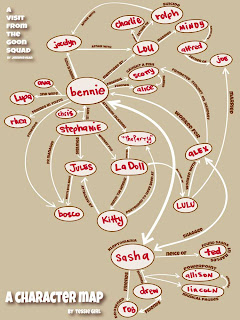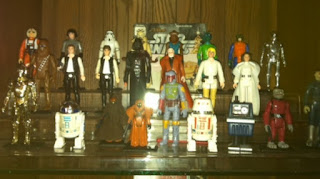Grindhouse
So I went saw Grindhouse yesterday afternoon. Again. It's that good. Death Proof, the Tarantino half of the double feature, I could watch all day. The first time I saw it I didn't know what to make of it. After the thrill-a-minute first film and the hysterical fake trailers you're primed for more of the same and Death Proof is much more deliberate. The second viewing you're prepared and you discover how excellent and singular a film it is; you sort of wish DP had the theater all to itself. Tarantino calls it a slasher film with a car as the weapon, but it struck me how similar to Jaws the film is. In Jaws you never see the shark. The tension builds as a result of what you imagine and Kurt Russell shows up in his car every so often, the hood ornament a fin breaching the surface of the water as he hunts for his next snack. That's actually the first thing we see Stuntman Mike doing: eating. Gratuitously.
There's a lot going on in the film. The first time I thought the two features didn't speak to each other; they have a textual relationship (they share the same world, apparently, and some characters - as well as some from previous Tarnatino films) but I didn't see an intertextual one. So they're making a monument to grindhouse cinema; Robert Rodriguez succeeds flawlessly in recreating that exact type of film. He does it digitally, with gore and effects and T&A galore. Tarantino on the other hand devotes an entire film to characters that have largely lost their jobs to the advancement of CGI; Stuntman Mike is a relic from a bygone age. He lists a string of TV series he worked on, which nobody remembers. There's no reason to death-proof a car anymore; they'll just insert a computer generated one. Tarantino shoots the film in grogeous 35mm; the stunts are real. That's really Zoe Bell on the hood of that Dodge Challenger holding on to ABSOLUTELY NOTHING. Stuntman Mike hunts down groups of girls, girls of new media (Jungle Julia is a DJ and upstart record label exec, and Zoe Bell is a real-life stuntwoman who stood in for Xena and the Bride) and destroys them with his old Hollywood car. But they turn the tables on him and in this way, the films do speak to each other, and grindhouse cinema in general. Rodriguez created a brilliant homage to the genre; I don't think it transcends it. Tarantino usurps it. DP questions the validity of the films it names as its inspiration. It considers the direction film itself is taking, away from practicality toward ones and zeroes. And it has one of the best car chases you're ever likely to see. So go see it.
Oh, and I don't know what to make of this yet, but give it a read.
There's a lot going on in the film. The first time I thought the two features didn't speak to each other; they have a textual relationship (they share the same world, apparently, and some characters - as well as some from previous Tarnatino films) but I didn't see an intertextual one. So they're making a monument to grindhouse cinema; Robert Rodriguez succeeds flawlessly in recreating that exact type of film. He does it digitally, with gore and effects and T&A galore. Tarantino on the other hand devotes an entire film to characters that have largely lost their jobs to the advancement of CGI; Stuntman Mike is a relic from a bygone age. He lists a string of TV series he worked on, which nobody remembers. There's no reason to death-proof a car anymore; they'll just insert a computer generated one. Tarantino shoots the film in grogeous 35mm; the stunts are real. That's really Zoe Bell on the hood of that Dodge Challenger holding on to ABSOLUTELY NOTHING. Stuntman Mike hunts down groups of girls, girls of new media (Jungle Julia is a DJ and upstart record label exec, and Zoe Bell is a real-life stuntwoman who stood in for Xena and the Bride) and destroys them with his old Hollywood car. But they turn the tables on him and in this way, the films do speak to each other, and grindhouse cinema in general. Rodriguez created a brilliant homage to the genre; I don't think it transcends it. Tarantino usurps it. DP questions the validity of the films it names as its inspiration. It considers the direction film itself is taking, away from practicality toward ones and zeroes. And it has one of the best car chases you're ever likely to see. So go see it.
Oh, and I don't know what to make of this yet, but give it a read.


Comments